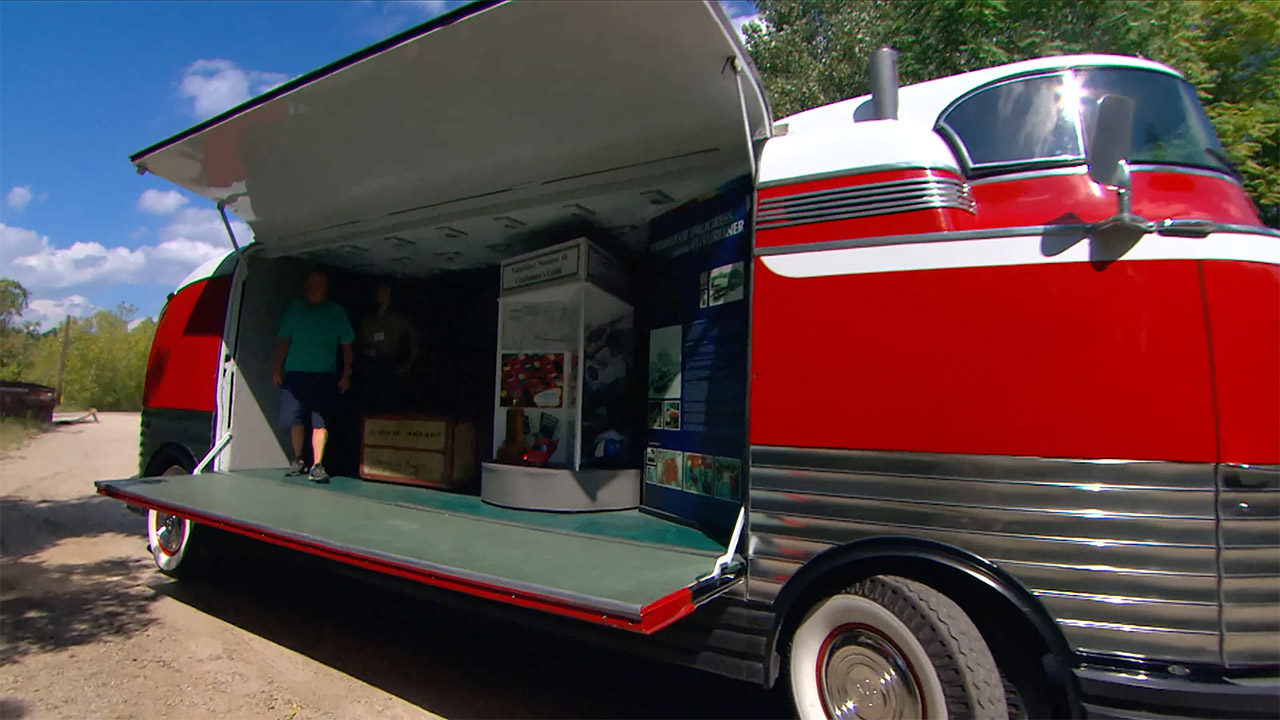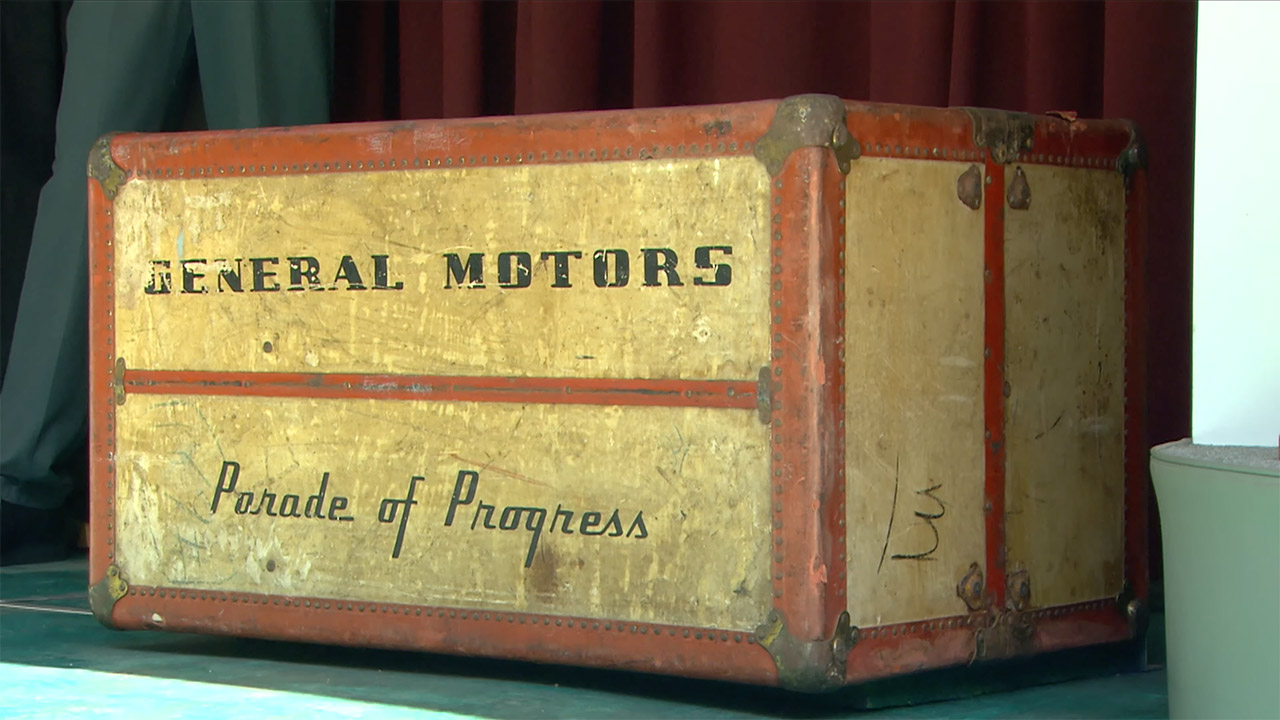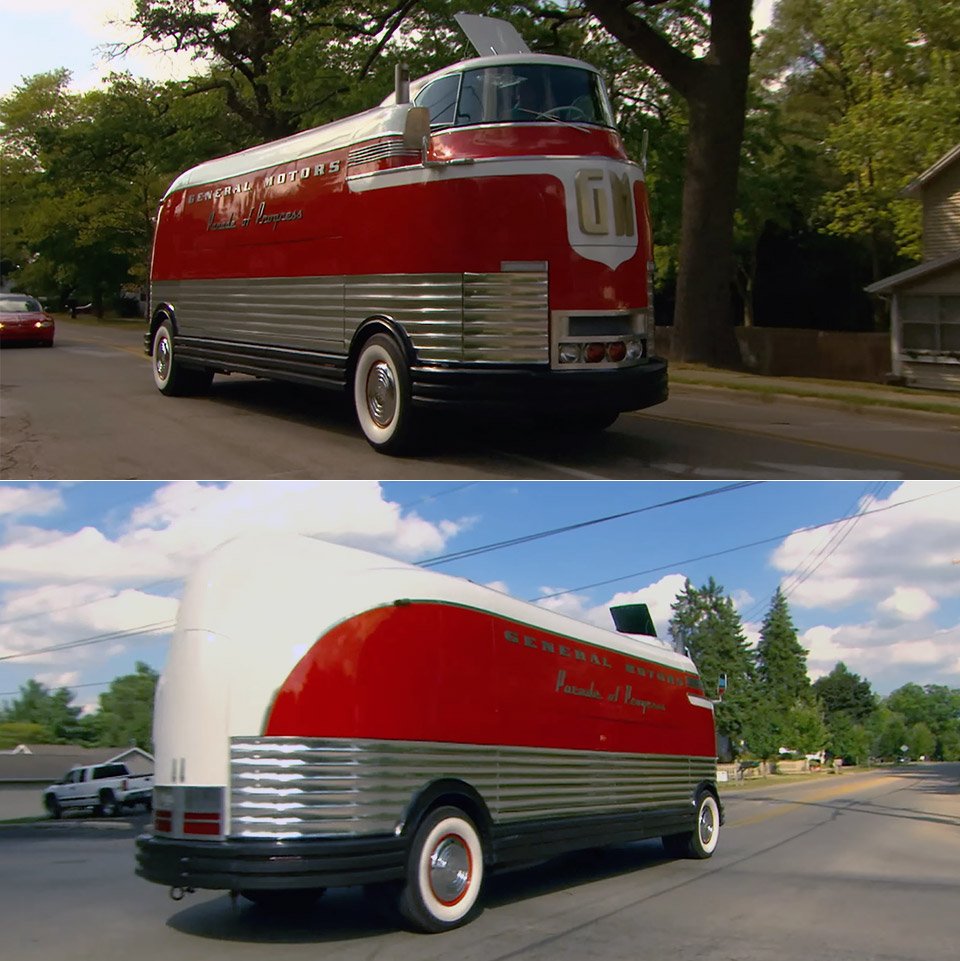In the early 1950s, America was on the cusp of a new era. World War II was fading into memory and the country was full of hope thanks to science and industry. Amidst all this progress General Motors unleashed the 1953 GM Futurliner, the embodiment of the era’s unlimited optimism. This was a 33-foot-long, 30,000 pound rolling billboard for the future, a machine built to wow small town America with tomorrow.
The Futurliner was the star of General Motors’ Parade of Progress, a traveling roadshow that showed the company’s vision to the public. Imagine a caravan of 12 of these giants rolling into a dusty town square, their shiny red and silver bodies reflecting the sun. Its Art Deco design with sleek curves and a towering driver’s cabin looked like something out of a science fiction movie. The side panels opened to display exhibits showing General Motors’ latest and greatest, including microwaves, stereos, automatic transmissions as well as prototype engines.
Sale

LEGO Technic Chevrolet Corvette Stingray Toy Car – Building Toy Set for Kids, Boys and Girls, Ages 9+ -…
- MUSCLE CAR MODEL – Let girls and boys race into an exciting building project with the LEGO Technic Chevrolet Corvette Stingray car model kit for…
- CORVETTE CAR TOY – This set lets young builders assemble their own Corvette model before playing with the vehicle and exploring its functions
- REALISTIC FEATURES – This Corvette model kit includes moving functions with steering, a moving 8-cylinder engine, differential and opening doors and…
Under the hood was a tiny but mighty 6 cylinder 302 cubic inch engine producing 145 horsepower. That doesn’t sound like much for a 13 ton beast, but the Futurliner was not built for speed. It could go 30-35 mph on flat ground, 80 mph downhill and 10 mph up a steep hill. The driver sat high in the glass walled cabin, fighting the air conditioning and poor visibility. The reinforced front wheels carried the load of a vehicle that was more stage than truck. Inside, the Futurliner was not designed to carry passengers but to display items, with carefully chosen exhibits that would turn heads and stir dreams.

What made the Futurliner unique was its role as a cultural ambassador. Auto shows in cities like New York and Detroit drew metropolitan crowds, but GM targeted the heartland. The Parade of Progress brought the future to areas where horse and buggy days were still a memory. When the convoy arrived it turned town squares into theaters of innovation. Locals would gaze in awe at the size of the cars, the shiny bodies standing out against the Chevys and Fords parked alongside. The Futurliner displayed products but also promoted a lifestyle, telling Americans that GM was creating a world of endless possibilities.

But despite its grandeur, the Futurliner had a limited shelf life. The Parade of Progress started in 1936 and was put on hiatus during World War II, before being revived in 1953. By 1956, a new force was changing America: television. Why go to a town square when the future could come into your living room? The introduction of television made the Parade redundant and GM parked the Futurliners for good.
